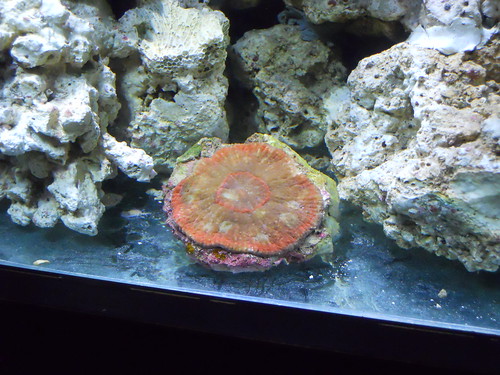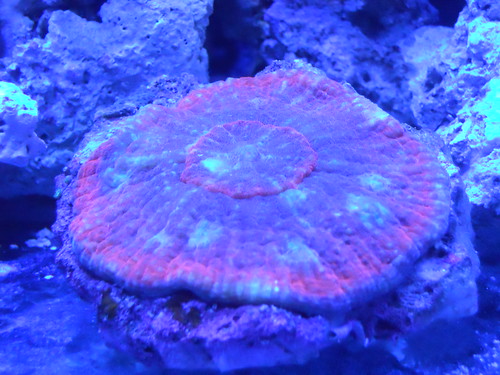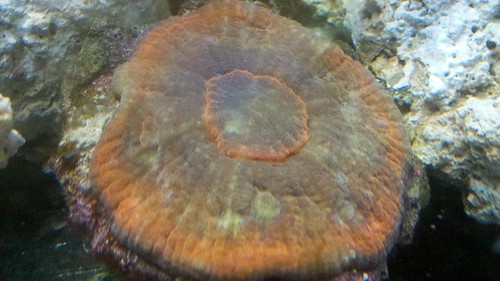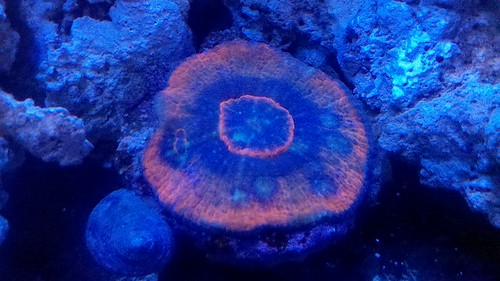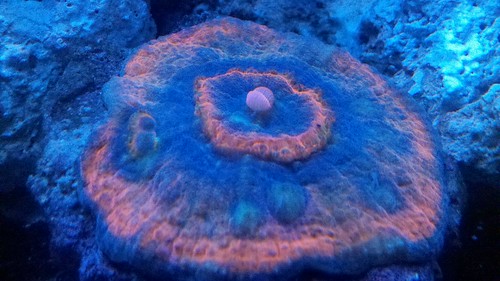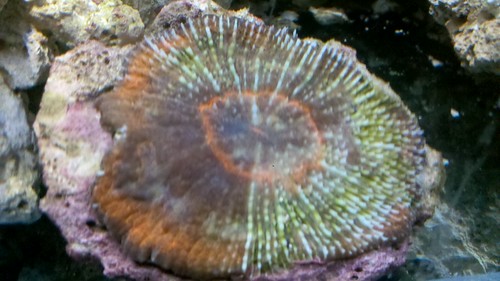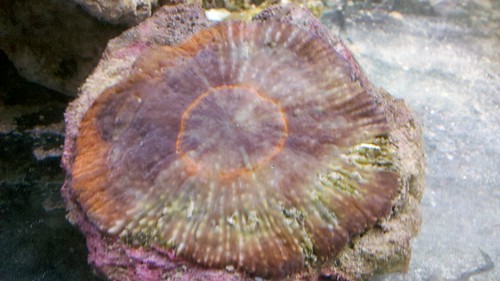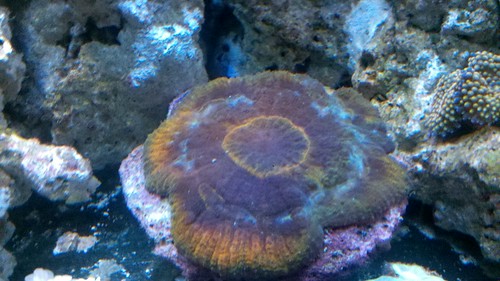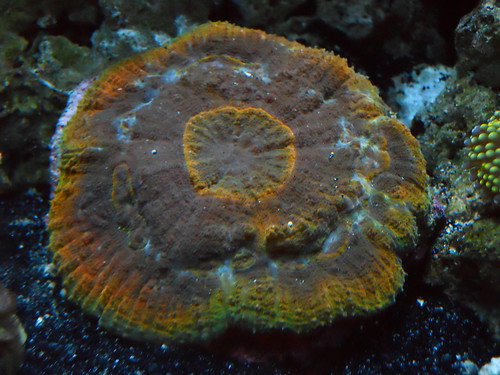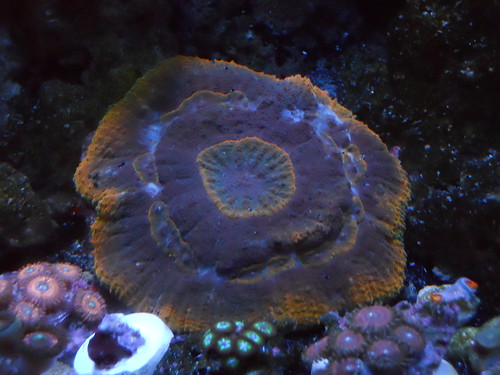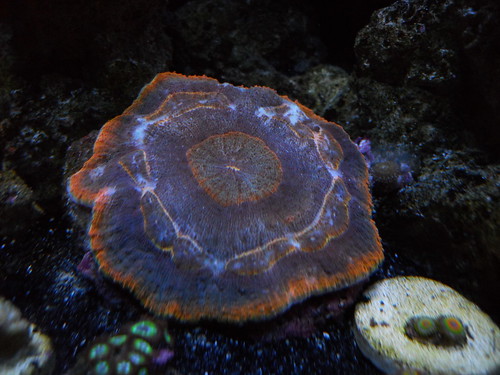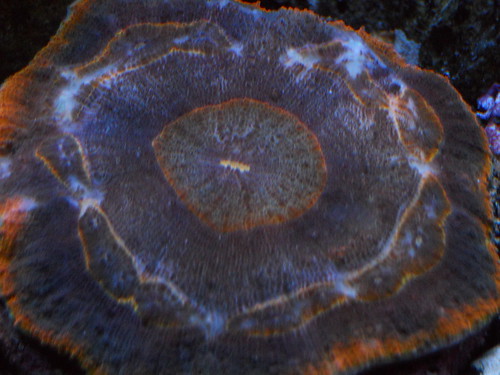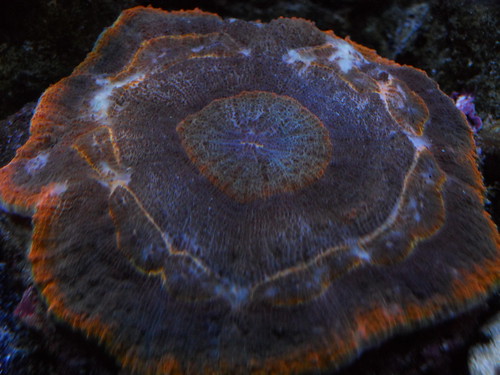FishyReef
Broke Reefer!
So for a while now (few months) I've noticed small patches on my australomussa turning white. These have primarily been in areas where it is developing new eyes and rings, so I thought it was a sign of tissue growth. But it seems to be spreading and I am not noticing lighter colored striping starting to develop in the main body of the coral. The tissue is not receding, it still responds to feeding, and generally appears normal aside from the white patches. This is a unique coral that up to this point has done amazingly well in my tank, and I've had it for 10 months. For those who don't know, it is an LPS coral that is probably most closely related to a scoly vitensis (these two specimens are often confused).
I have been having trouble keeping my alkalinity up and my best guess is that the discoloration might be related to that. Does anyone know if low alk can result in LPS tissue (or scolys specifically) turning white? Or could this indeed be a sign of impending growth?
I have also very slowly been increasing my lighting - the most recent change I made was an increase of 5% intensity probably 3 weeks ago for two hours at the peak of the photocyle. I doubt that is enough of a change to cause this, but that is really the only other change in the tank. Finally, for what its worth, I've been having trouble with virtually all zoanthids that I place near the australomussa - not close enough to be stung, but in the same vacinity of the tank. There have been no other changes in flow, etc.
Anyone have any ideas for me?
I have been having trouble keeping my alkalinity up and my best guess is that the discoloration might be related to that. Does anyone know if low alk can result in LPS tissue (or scolys specifically) turning white? Or could this indeed be a sign of impending growth?
I have also very slowly been increasing my lighting - the most recent change I made was an increase of 5% intensity probably 3 weeks ago for two hours at the peak of the photocyle. I doubt that is enough of a change to cause this, but that is really the only other change in the tank. Finally, for what its worth, I've been having trouble with virtually all zoanthids that I place near the australomussa - not close enough to be stung, but in the same vacinity of the tank. There have been no other changes in flow, etc.
Anyone have any ideas for me?

